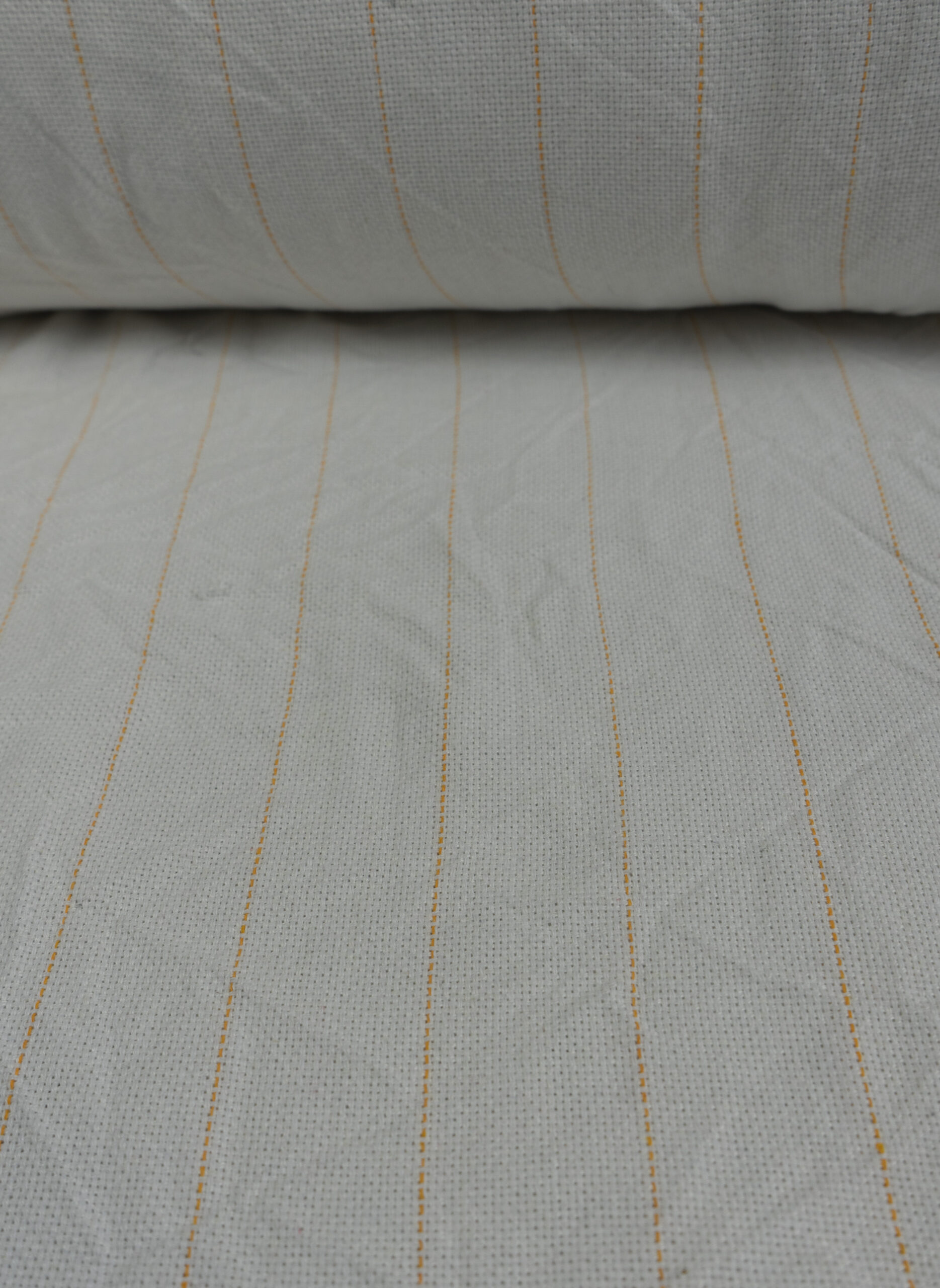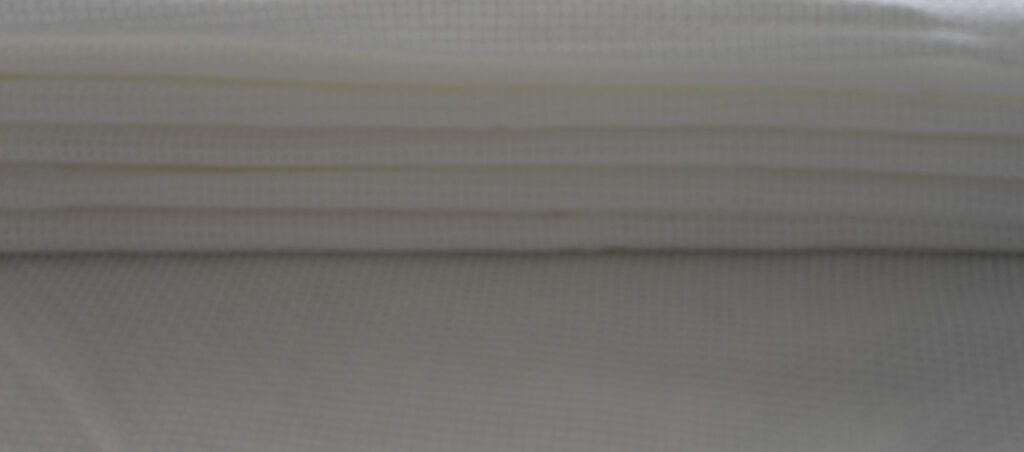First of all, I have no idea why I haven’t written a blog about this yet. After all, this is a topic that often comes up via email or during a workshop. In this blog, I discuss the three most common fabrics used for tufting, why and when to use them best. I should mention that it’s sometimes difficult to determine which fabric is which, as not every supplier uses the same terms, and it’s not really standardized like it is with yarn, for example. However, the fabric can often be distinguished by its color and the lines on the fabric.
Tufting cloth / tufting fabric polyester
First, I’ll tell you more about the 100% polyester tufting fabric. This fabric is generally gray in color and has white horizontal and vertical stripes. The squares that are created as a result are often 50x50cm. I think this makes it the favorite of suppliers like me, because it’s easy to cut to size. Of course, this can also be a big advantage for the user.
Because the fabric is 100% polyester, it’s more expensive to make and is often offered at a higher price. Advantages of this fabric are that it’s stiffer and therefore stretches less, so you don’t have to re-tension the fabric as often, if at all. Because the fabric is stiffer and often stays better under tension, the chance of damaging it is much smaller. So a hole is not easily made, and therefore this fabric is also extremely suitable for beginners. You can easily turn with the tufting gun on this fabric and work very detailed.

The fabric’s stiffness might remind you of jute, but this is not the case. Jute is a natural product made from plants and therefore has a certain smell. I’ll come back to jute later.

Monk’s cloth / tufting cloth / punch needle fabric / monk’s cloth
There are also many names for this fabric, but monk’s cloth is the official name. This fabric is often recognizable by its cream color with the yellow horizontal stripe. This cloth is made from a combination of polyester and mainly cotton. This combination makes the fabric cheaper to produce and can therefore be offered at a lower price. I think we’ve already mentioned the biggest advantage of this cloth right away. This doesn’t mean that this isn’t a good cloth to work with, and you can make a lot of beautiful work on it. You can easily make turns on the fabric and work in detail.

The disadvantages are mainly due to the cotton content. This makes the fabric less stiff, and you can more easily make mistakes/holes if you don’t have a consistent technique yet. The cotton also stretches and sags more easily, which means you may need to tension your fabric more often.

For needle punching, the fabric is extremely suitable, especially with the thicker needles (medium and large). For some projects, it’s desirable not to have a yellow line visible on the fabric, so the fabric can also come without a line or even in different colors.

Jute
The last fabric I want to discuss is jute. The biggest advantage of jute is that it’s cheap, but unfortunately, there are quite a few disadvantages. First of all, jute has a smell that you must be able to tolerate. Jute is a natural product made from dried plants, so the holes and ‘threads’ will never be uniform. This makes it difficult to make curves with the machine and work in detail. Difficult is putting it mildly; I definitely can’t recommend it to a beginner. Due to the uneven holes, the fabric will hold the wool better in some places than in others. If you’re very experienced, you might be able to work around this quite well, but even an experienced tufter can’t make the fabric disappear completely. By this, I mean that when finishing the sides, you can always see something of the fabric you’ve used. A white or gray line is much nicer than an uneven brown line.
Summary
I don’t think you need to guess which fabric is my favorite. The gray polyester tufting fabric is the nicest to work with in all respects, and despite the price, I would always choose this one. The monk’s cloth, on the other hand, is not a bad alternative at all.
If you happen to know of any more fabrics that are used for tufting, let me know and I’ll try them out so I can add them here. As always, you can ask questions or leave comments below or through the contact form!